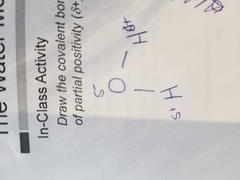![]()
![]()
![]()
Use LEFT and RIGHT arrow keys to navigate between flashcards;
Use UP and DOWN arrow keys to flip the card;
H to show hint;
A reads text to speech;
50 Cards in this Set
- Front
- Back
|
Carbohydrates |
Are made modern carbon, oxygen and hydrogen Monomers -glucose Polymers - glycogen Fx- energy and structural |
|
|
Protein |
Made of carbon, oxygen, hydrogran and nitrate (sulfate) Monomer- amino acids Polymers- peptides 7 Fx- structural, contractile, storage, defense, transport, signaling proteins, enzymes |
|
|
Nucleic acids |
Made of carbon, oxygen, hydrogen, and phosphors Monomers- nucleotides Polymers- nucleic acid Fx- dna |
|
|
Nucleotides |
Made from sugar, a base and phosphate group form the backbone of nucleic acid |
|
|
Dna |
Encodes hereditary information Double helix structures |
|
|
RNA |
Creating protein Some virus use RNA to store hereditary information |
|
|
Central dogma |
Dna RNA Protein (transcription) Translation |
|
|
Mutation |
Change in DNA sequence or in the number or structure of chromosomes |
|
|
Lipids |
Made of carbon, oxygen, hydrogen Mostly hydrophobic Eg, Fats, phospholipids, steroids Saturated and unsaturated fatty acids Cis ans trans unsaturated fatty acids Fx- cell membrane |
|
|
Saturated fatty acid |
Maximum number of hydrogen atoms No double bonds |
|
|
Unsaturated fatty acids |
One or more double bonds |
|
|
Components of an atom |
Protons Electrons Neutrons |
|
|
Define Elements |
Fundamental building blocks of matter |
|
|
Define compound |
2 or more separate element |
|
|
Define orbital |
Space around the nucleous of an atom where electrons are found. Allow atoms to bond with other atoms |
|
|
Define valence shell |
Outermost shell of an atom containing then valence electrons |
|
|
Define valence electron |
Number of atoms to complete a valence shell to its maximum occupancy |
|
|
Describe the roll of valence electrons in forming chemical bonds between atoms |
Corresponds to the number of covalent bonds an element can form. The closer an atom is to achieving a full shell, the more "electron hungry" it is. |
|
|
Describe polar covalent bond |
One atom is more electronegative. Electrons not shared equally. Partially charged. |
|
|
Dedcribe non polar covalent bond |
Similar electronegstivity Shares equally |
|
|
Describe ionic bond |
Attraction between ions of opposite charge. Sometimes strip electrons from partner. After the transfer, both atoms are charged. |
|
|
Describe hydrogen bonds |
Interaction between a partially charged hydrogen atom and electronegstuce atom. Hell's stabilize biologic molecules. |
|
|
Describe van der waals forces |
Attraction between uncharged molecules. Long hydrocarbon chains. Slightly charged due to constant motion of electrons. |
|
|
Why is water molecules practically charged? |
?? |
|
|
Draw water molecule |

|
|
|
Describe hydrophilic |
Water loving. Charged ions and polar molecules tend to be hydrophilic. |
|
|
Describe hydrophobic |
Water fearing Unchanged non polar molecules (oils) |
|
|
4 features of water |
1) cohesive behaviour 2) moderator temperature 3) expands when freezes 4) versatility as a solvent but not universal |
|
|
How acids and bases directly or indirectaly affect the hydrogen ion concentration of a solution |
A change of 1pH corresponds to a 10-fold change in hydrogen ions |
|
|
Define properties of carbon |
Almost all molecules made by cells contain carbon. Has valence of 4 = form 4 covalent bonds. Can form huge range of large and diverse molecule. |
|
|
Define organic molecule |
Compounds synthesized by cells and containing carbon. 1)carbohydrates 2)protein 3)fats 4)lipids |
|
|
Define hydrocarbons |
Organic molecules made of only carbon and hydrogen |
|
|
Define nacromolecules |
?? |
|
|
Define monomers & polymers |
?? |
|
|
Describe chemical structure properties of protein Name of polymers and monomers Chemical bonds Rolls ok the body |
Name of polymers and monomers Chemical bondsRolls ok the body |
|
|
Describe chemical structure properties of nucleic acidsName of polymers and monomers Chemical bondsRolls in the body |
Name of polymers and monomers Chemical bondsRolls in the body |
|
|
Describe chemical structure properties of carbohydratedName of polymers and monomers Chemical bondsRolls in the body |
Name of polymers and monomers Chemical bondsRolls in the body |
|
|
Chemical properties of lipids |
?? |
|
|
Chemistry structure of fat & its roll in the body |
?? |
|
|
Chemistry structure of phospholipids& its roll in the body |
?? |
|
|
Chemistry structure of steroids & its roll in the body |
?? |
|
|
Saturated fat vs unsaturated fat |
?? |
|
|
Know what the structure of amino acids |
?? |
|
|
Know what the structure of nucleotides |
?? |
|
|
Know what the structure of monosaccharides |
?? |
|
|
Know what the structure of fatty acids |
?? |
|
|
Know what the structure of phospholipids |
?? |
|
|
Know what the structure of fats |
?? |
|
|
Describe covalent bond |
2 types. Polar and non polar. Shares pairs of valence electron. Double bond = Very strong bond. |
|
|
Heat vs temperature |
Heat: a measure of the amount of kinetic energy due to molecular motion. Temperature: measured the intensity of heat due to the average kinetic energy of molecule. |

